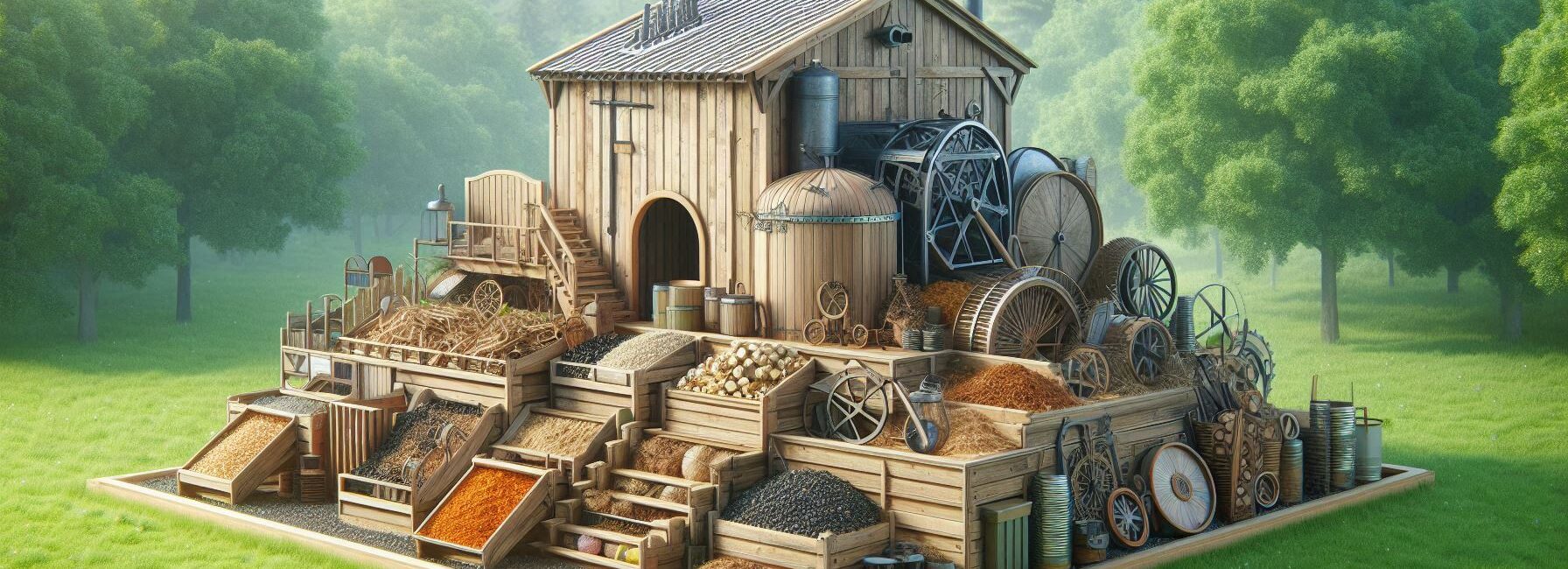Please Note: This post may contain affiliate links. If you click one of them, we may receive a commission at no extra cost to you. As an Amazon Associate, I earn from qualifying purchases.
Last Updated on November 1, 2025 by Kevin Collier

Top Takeaways and Key Concepts
- Assess Local Regulations: Check zoning laws and obtain necessary permits before starting.
- Select Suitable Hive Type: Choose between Langstroth, Top-Bar, or Warre hives based on your environment.
- Acquire Essential Equipment: Obtain a smoker, hive tool, protective gear, and extractor.
- Choose Local Bee Strains: Opt for bees adapted to your climate and resistant to local pests.
- Provide Year-Round Care: Monitor for pests, ensure adequate food stores, and manage hive ventilation.
Can you image having honey if things ever go wrong and we wind up in a world after the end of the world? Really. It looks like liquid gold. It tastes great on toast or even right out of the jar when no one is looking. It feels like a secret that makes you happy.
Honey is more than just good. It seems like magic. It can help with sore throats and mend cuts. That's so cool! Let's get into the thrilling world of beekeeping if you want to be the honey hero!
First, figure out where you're going to put your bees. They need a place to live, just like you do. Their palace is a beehive. You can get one or even make one yourself. There are a lot of amusing videos on the internet that show you how. You could get a little dirty, but that's part of the fun, right?
Next, you need to think about the bees. There are several kinds. Honeybees are the greatest kind of bee for making honey. You can get them from places that sell bees. They come in small boxes. Just think: you'll get real bees in the mail! That's a little crazy.
When your bees get there, they need to become acquainted to their new home. You could be a little scared, but they're usually nice. You will look like a superhero if you wear a bee suit. That's really cool.
At first, giving them sweet water helps them get used to their new home. They really like it. You need to check on them from time to time. Check to see that they have adequate food and that the hive is warm. It's like having a pet, except with more wings.
It's really fun to collect honey. Imagine opening the hive and seeing honeycomb that is golden. It's like a treasure! You will need several equipment to extract the honey out. After that, you can eat it or give it to others. They'll think you're great.
It may seem like a lot to do at first, but just take it one step at a time. Along the process, you'll learn a lot. And don't forget about the tasty rewards.
Bees are good for us. They help plants grow, and they are very vital for the environment. You are also doing something positive for the whole earth when you maintain bees.
*** Shop for Survival Gear - Tools - Kits ***
Survival Gear - Bags and Backpacks - Knives - Boots/Footwear - Communication
Outdoor Cooking - Gloves - Hydration - Dry Boxes - Water Filtration Systems
Tents - Sleeping Bags - First Aid Kits - Multi-Tools - Flashlights - Fire Starters
Navigation - Survival Food - Night Vision - Headlamps - Stun Guns - Binoculars
So, are you ready? Let's get started with beekeeping! Get your stuff, pick your bees, and let the fun begin! In no time, you'll be the honey hero.
Understanding Why Bees Matter

To begin with, why should you ever think about being a beekeeper? Bees are very important for pollination, but they also make for great stories that you can tell your friends about your brave experiences with swarms. Let's be honest, who doesn't love a good bee story?
Many of our favorite items, including apples, almonds, and chocolate, would be as hard to locate as a unicorn in your lawn if bees weren't around.
Bees are responsible for nearly a third of the food we eat, which is interesting. Yes, these little things have a bigger effect on your breakfast than you might realize!
By keeping bees, you not only make sure you always have honey and wax for projects like candles and lip balm, but you also benefit the environment in your area. Talk about doing more than one thing at once!
Imagine this: while everyone else is running about trying to find out how to produce their food in an emergency, you'll have jars full of deliciousness ready to go.
Also, don't forget that honey never goes bad! Archaeologists have uncovered containers of honey in old Egyptian tombs that are still good to eat. So if you ever need a snack during a zombie apocalypse, you'll be ready.
Putting Your Gear Together
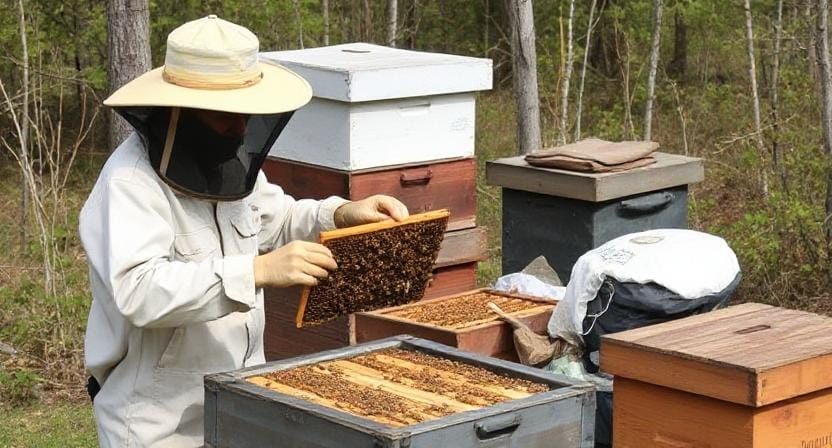
Now that we've spoken about why bees are great and why they should be a part of your survival plan, let's talk about gear. You can't just enter into this thriving business without some important equipment! Think of it like getting ready for a camping trip where the main attraction is flying stingers instead of marshmallows.
The hive itself is first. Langstroth hives or top-bar hives are both good choices. Which one you choose will depend on your space and personal preferences.
Langstroth hives are like fancy apartments for bees. They stack well and make it easier to take care of colonies. Top-bar hives are more rustic and let bees build their own comb, but they need more work to run.
Protective apparel is next on the list since no one wants to be swarmed by furious bees that think they're at an all-you-can-eat buffet! A simple bee suit will suffice, like the kind that makes you look like you're trying out for an astronaut position. It should have gloves and a veil.
Believe me, those little winged creatures will be happy when they find out they can't sting through cloth!
Don't forget about hive tools (to pull apart frames) and smokes (to calm down those angry ladies). Honestly, putting together these items seems like putting together a superhero kit, but instead of capes and masks, you have bee brushes and foundation sheets!
Picking the Right Kind of Bee
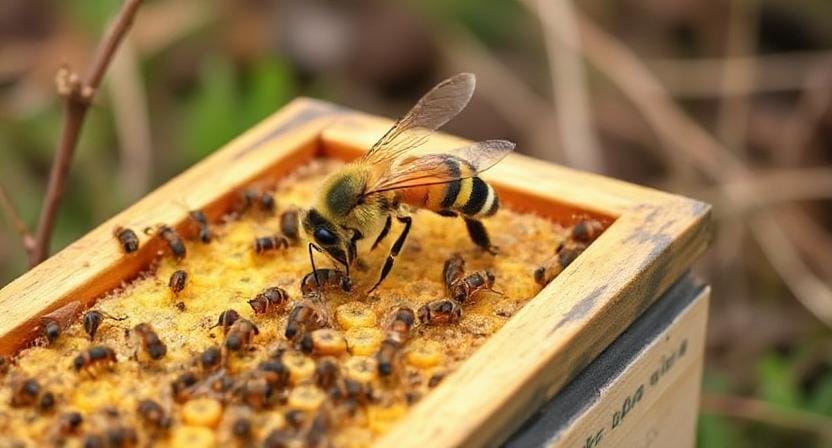
Some bees are nicer than others, thus not all bees are the same. I strongly suggest that you use Italian or Carniolan bees when you start your business. They are noted for being kind and productive. Imagine having neighbors that don't yell at you every time they see you coming with treats for their colony!
On the other side, if you prefer doing things that get your heart racing, stay away from aggressive species like Africanized bees. Or maybe you just want to see how fast you can run away from home!
Before you bring any buzzing beauties home, make sure to research the rules of beekeeping in your area, as they vary a lot from place to place. Some localities may need licenses or limit the amount of hives because of zoning laws. You wouldn't want Aunt Betty to complain about her allergies, would you?
How to Set Up Your Hive
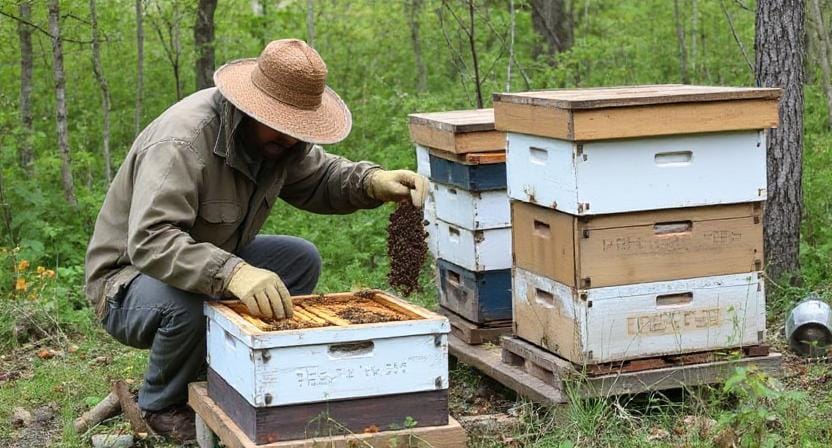
Okay then! You've done everything you need to do. Now it's installation day, the day when dreams come true! Pick a sunny area that isn't too windy but is easy to get to so you don't feel like you're going on an adventure every time you go there.
Put the hive boxes together in stacks of two deep boxes, making sure there is adequate room between them for air to flow. This will keep the busy ladies from getting frustrated and stuck in traffic jams within their new home.
After everything is ready, my favorite part is introducing your new inhabitants! If you're transferring frames with nurse bees from another colony or buying packaged bees online, be careful. This isn't simply moving furniture; treat them like they're precious gems because they are!
Once they've settled into their new home, which can take some time, you'll be glad you did. It's worth seeing them grow over the next few weeks!
Taking Care Of Your Colony Like A Pro

Now that you've welcomed these furry little creatures into your life, what do you do next? Maintenance is very important here since if you don't do it, things will go wrong far faster than if you forget to bring lunch to a meeting!
Regular checks every few weeks assist keep an eye on the health of the colonies and their food stockpiles. Honeycomb reserves are like pantry basics in the winter when flowers aren't blossoming outside anymore… you know what I mean?
When you inspect, look for indicators of diseases like Varroa mites or foulbrood infections. Fixing problems early on will save you a lot of trouble later on. After all, it's better to be safe than sorry!
Also think about separating colonies to make them bigger once their populations reach a certain point, since too many worker drones can cause them to act out. Believe me, no one wants irate roommates buzzing around out of the blue!
If you manage your time well over the next several seasons, you'll soon be able to enjoy gathering excellent raw honey and sharing what you've learned with family members who are also ready to help.
Taking Care of Honey Harvesting
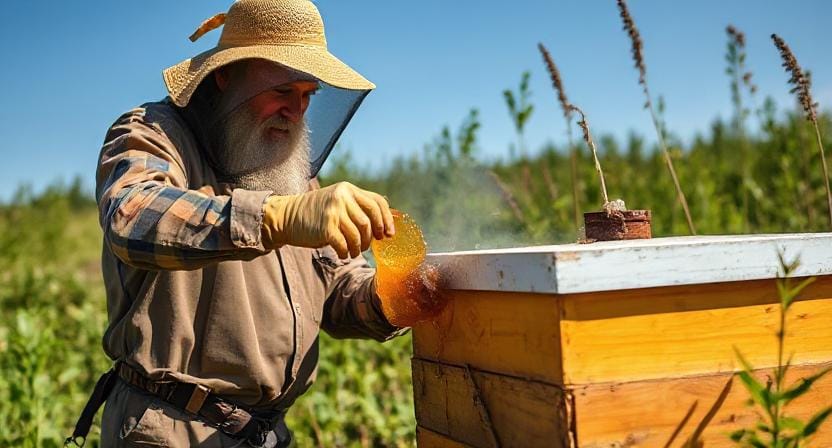
Finally, we've reached my favorite part: collecting that liquid gold! Timing is also important here since waiting until most of the flowers bloom will give you the best yields before making the last cuts off frames full with combs dripping with honey.
To harvest correctly, use smoke first to calm busy women down, which will make the extraction procedure go smoothly and without any problems—it's a win-win situation!
Once you've taken the product out, carefully pour it into jars to keep the flavor intact. Label each batch so you can keep track of which ones you like best later on. Knowing exactly where the ingredients came from is the best thing, especially since sustainability is a big part of the whole process!
That's all there is to it, my friend! We started with the basics of keeping these cute flying sausages—yes, bees—happy so they can give us delicious honey all year long.
Isn't it crazy how something so small can do so much? These tiny animals are very vital. They help flowers blossom and fruits grow. It seems like they have magic powers. You know that feeling you get when you watch a bee flying around? It signifies that fantastic things are happening!
Beekeeping is a wonderful thing to do. You'll learn a lot about food, nature, and working together. Your own honey is like a delicious treat in the end. Picture drinking tea with your own honey in it. So tasty!
It could feel like a lot right now. That's OK. Even the best beekeepers have to start somewhere. Don't rush. You can do this!
Don't forget that every step you take is part of this really fantastic trip. Get your stuff together, chat to other people who love bees, and don't be afraid to ask questions. It's okay to make errors; that's part of the pleasure.
What do you think? Are you ready to make your own buzzing little kingdom? Let's get going!
Frequently Asked Questions
Do I need legal approval before starting a hive?
Yes. Many areas require you to review zoning rules, register your apiary, or obtain permits before hosting bees.
Which hive style is best for beginners?
Langstroth hives are widely used and easier to manage for new keepers, while top-bar or Warre hives cater to more natural comb building.
What basic equipment is required?
You will need a smoker, hive tool, protective suit or veil, gloves, and an extractor for honey harvesting.
Why choose local bee strains?
Bees adapted to local climate are more resilient, require less intervention, and are better at resisting local pests and disease.
How often should I inspect my colony?
Regular checks, especially during warmer months, help monitor food levels, pest pressure, brood development, and hive ventilation.
How do I support bees through winter?
Ensure adequate honey stores remain, reduce hive openings, and maintain ventilation to prevent condensation buildup.
When is honey harvesting typically done?
Honey is usually harvested after major nectar flows when combs are capped, indicating moisture content is stable for storage.
Suggested Resources:
Beekeeping Basics
https://www.beekeepingbasics.com
The Complete Guide to Beekeeping
https://www.completebeekeepingguide.com
Honey Bee Health Coalition
https://honeybeehealthcoalition.org

Kevin Collier is a seasoned survivalist and expert in prepping and homesteading, contributing to WiseSurvive.com. With a deep-rooted passion for self-sufficiency and outdoor survival skills, Kevin shares practical advice, strategies, and resources to help individuals prepare for any challenge. His informative articles cover a range of topics, from essential survival techniques to sustainable living practices, empowering readers to thrive in any situation. Whether you're a novice or a seasoned prepper, Kevin's insights will inspire you to take charge of your readiness and build resilience for the future.

